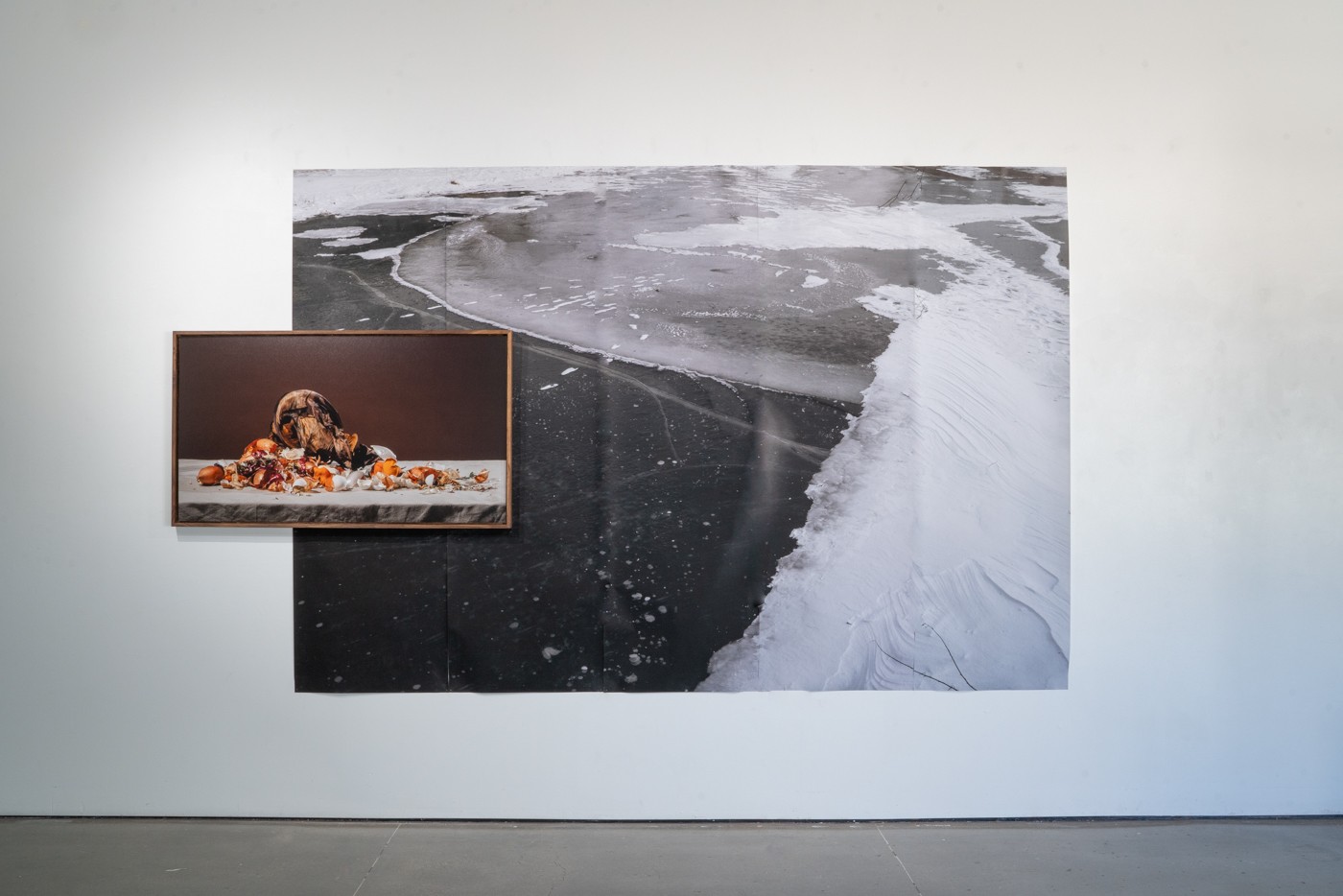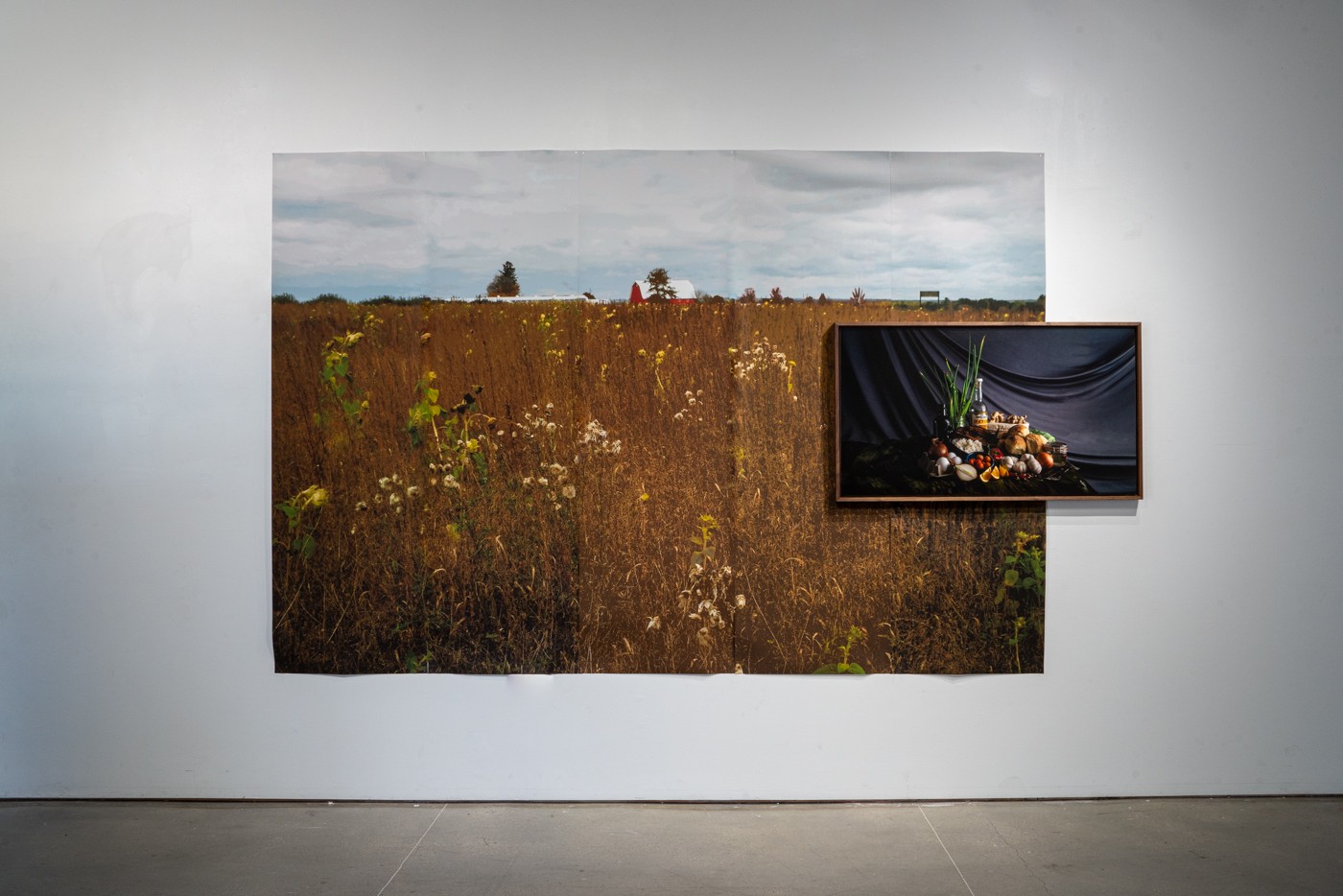We’re excited to introduce you to the always interesting and insightful Mariah Moneda. We hope you’ll enjoy our conversation with Mariah below.
Mariah, thanks for joining us, excited to have you contributing your stories and insights. We’d love to hear about a project that you’ve worked on that’s meant a lot to you.
The Distance to Kababayan is the stage I built for the people in my life, past, present, and future, where I demonstrate how relationships can be built over a meal, and can create belonging, where memory becomes currency to build kinship, through the exchange personal histories.
Kababayan is also the name of the Filipino bakery that was just up the street from my grandparent’s’ house in San Diego, California. We frequented this Neighborhood bakery often and it is a vibrant source for traditional comfort foods for the community of Filipino Immigrants that surrounded the area, its translation from Tagalog to English as “fellow country man,” was like a friend who knew what you needed when you needed it, providing comfort through familliar foods from the homeland, and creating a sense of belonging.
When we think about human needs, often, food, water, and shelter are some of the first things that come to mind, and is confirmed with Maslow’s hierarchy of needs states that in order for a human to thrive, we must first meet the foundational physiological needs that sustain the body, such as food, water, and shelter. However, as we move beyond this, we must also create safe relationships of intimacy, that helps build the esteem and confidence around individuality, to eventually reach self-actualization where creativity and purpose come together for a robust and fulfilling life.
And while these needs are built on the rigid model of an individualistic approach and lacks the nuance of collectivist cultures, it aptly addresses the array of needs that are required to exist humanely, and in hardship especially, the need for emotional and socio-cultural connections becomes imperative to survival, and food, due to its association to the physical body and our senses, can be utilized as a creative vehicle that enables us to invite others into a space of comfort and belonging that crosses cultural barriers, and this sense of placelessness can exist anywhere with anyone at any and opposite points of the spectrum.
Through the use of photography, woodcraft, and performance, I utilize food as an my invitation to bring people together to build relationships though a meal.


Awesome – so before we get into the rest of our questions, can you briefly introduce yourself to our readers.
My name is Mariah Orate Moneda and my first dream was to be an astronaut. I wanted to see things no one else has seen before, I wanted to explore new boundaries, I wanted to know what it felt like to float in outer space alone and looking at the curve of the planet earth while the sun poured out into the vastness, swallowed up by the darkness around it. My second dream was to be a writer, I wanted to conjure up a personal paradise with people who cared, an indulgent escape from my every day, where every day was the adventure, where I could go and enjoy wherever the wind took me. When I was born, my parents allegedly named me after an old western song, “They Call the Wind, Mariah,” because I came out of the womb so quickly. The song opens with a deep chorus bellowing “Mariah” and the rushing vocals to mimic sounds of air cutting through the grass, “They have a name for rain and wind and fire… Mariah blows the stars around and sends the clouds a flyin’” and these lyrics, this song, that I used to find embarrassing as a thirteen-year-old, is now an endearing representation of a force to be reckoned with. Sometimes uncontrollable and chaotic, sometimes soft and calming, all of the energy or completely still, unpredictable. I’m not any of the things I thought I would be growing up. The curiosity is still there but I find it ironic that I’m an artist now, a career that’s based in creation and exploration, I’d like to think the younger version of me would be proud that we’re still exploring the in-between.
Mariah Moneda (b.1997) is an interdisciplinary artist and educator currently at the University of Wisconsin-Madison, where she is an Ed-GRs Graduate and Theodora Herfulth Kubly Minority Fellow. Her work investigates the connection between memory and the body’s senses to explore the nuanced relationship of labor, ritual, and community. Working with photography, sculpture, and social practice, Mariah draws on her lived experience as a first-generation, Filipino-American woman reflecting on the pervasive feeling of disconnection. Through this lens she leans into the experiential and utilizes food culture as an invitation to create community and consideration for those who share a space.
Mariah received her BFA from Arizona State University in Photography, has taught at San Diego Museum of Photographic Arts, has spoken at the Herberger Institute of Design and Arts, Artist Colloquium at the University of Wisconsin-Madison, Grossmont Community College, and The School of Human Ecology. Her work has been shown nationally and regionally across the United States at the Southeastern Center for Contemporary Art (Winston-Salem, NC) the Center for Fine Art Photography (Fort Collins, CO) The AjA Project (San Diego, CA), with work in collections at Arizona State University’s Northlight Gallery.


Do you think there is something that non-creatives might struggle to understand about your journey as a creative? Maybe you can shed some light?
I grew up with different goals from my family. I have always been curious in nature, but as my father likes to put it, I “only ever did well when it interests me”. I look at my “accolades” now and am always beside myself.
I thought I was going to join the military, become a journalist, or even become a lawyer, but in undergrad, I found purpose in photography. I was able to see the world through a lens and let my curiosity guide me though my life choices.
However, It didn’t pay off well when I graduated. I found that without the institution to support me with resources, that I strugged to make the work I wanted to make. Things were slow going and I had to work multiple part time jobs at the same time to make enough money, and life has a way of throwing you a curve ball.
In 2020 when Covid 19 caused a world pandemic, I moved in with my grandparents during that time, and soon afterwards, they ended up in a lethal car accident that fractured my grandmother’s spine, and left my grandfather with a lot of survivors guilt. By proximity, I became their caretaker.
I put my camera down because photographing felt painful, they were the subjects of much of my documentation through the diaspora and being Filipino-American, and I couldn’t bring myself to make photos of such a low part of my life. I felt like being a photographer was over for me and utilized craft as a form of coping.
Pivoting from the visual image when I did my undergrad in photography, worked as a photographer, and found belonging in it, was difficult for me to process and I never thought I’d be able to pick it back up again.
Two years later, an old colleauge reached out to me to apply for a graduate program. Going back to school wasn’t something I ever thought I would do, and my response to her was a solid, “no”. To which she asked to try and apply anyways.
At this point we were able to find alternative care for my family and I was miracuously accepted into a program where I was able to pick my camera back up and make work again.
I guess my takeaway from all of this was to just… be open to the possibility.
It can be hard when you’re faced with a reality that feels disparate, but I guess you never know.

Is there a particular goal or mission driving your creative journey?
Today, I think what I want is to enjoy the journey itself.
That’s such an artist’s response, but I think the process is important. Your past decisions inform so much of the work you do and help guide you through the future.
One day I’d like to teach collegiately and be a professor, so I can help others find their path, whatever that might be.

Contact Info:
- Website: mariahmoneda.com
- Instagram: https://www.instagram.com/mmoneduh/
Image Credits
Photographs of Mariah/Crowd: Tom Jones Mariah Moneda


